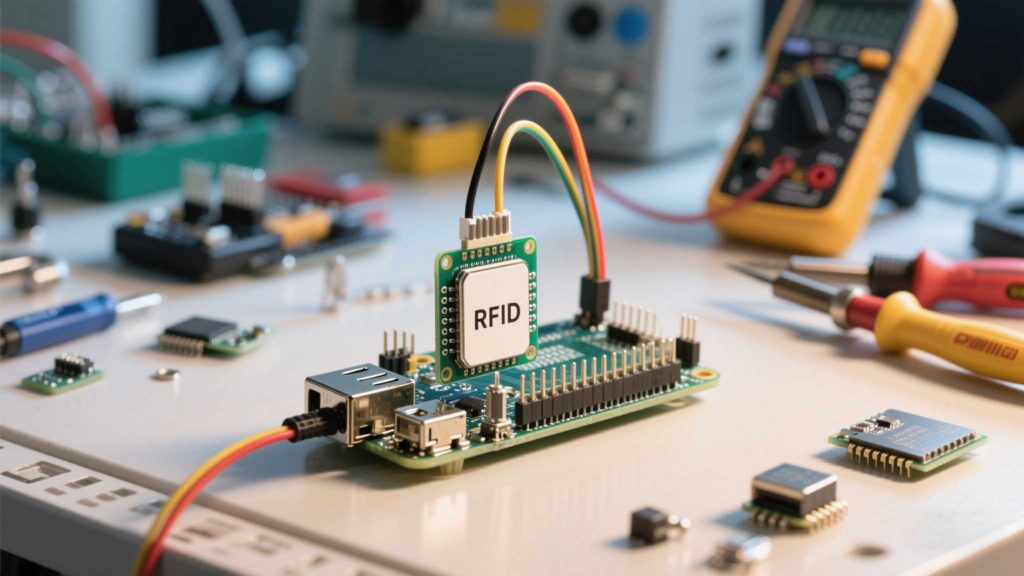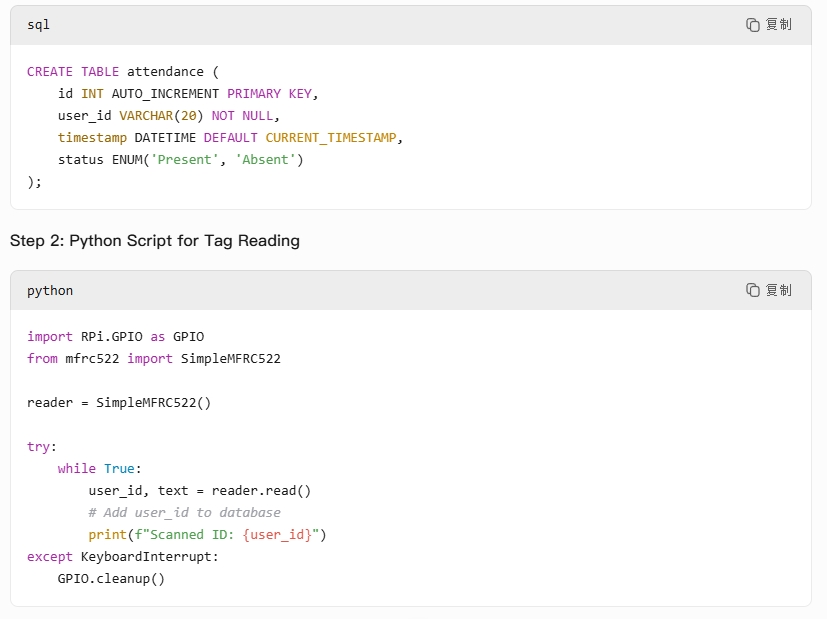Can handheld RFID readers scan through metal or liquid containers?
711Discover whether handheld RFID readers can scan through metal or liquid containers. Learn about UHF limitations, anti-metal tags, and solutions for reliable detection.
MoreAll RFID Product
Tired of manual sign-in sheets or unreliable biometric scanners? An RFID-based attendance system offers a seamless, secure alternative—no more buddy punching or lost records. Whether you’re tracking students, employees, or event attendees, here’s how to build one from scratch.

Most RFID modules connect via SPI or UART. For Raspberry Pi:

Step 1: Database Setup
Create a table to store:

Step 3: Web Interface (Optional)
Use Flask or Node.js to display attendance data on a dashboard. Include filters for dates/users and export-to-CSV functionality.

Case Study: A school using Cykeo’s readers reduced unauthorized entry attempts by 85% with encrypted tags.
Takeaway: Building an RFID attendance system is simpler than it looks. With a ~$100 budget and basic coding skills, you can replace clunky manual processes with automated, fraud-proof tracking. Brands like Cykeo offer plug-and-play modules, but the real magic happens when you tailor the software to your needs—whether it’s syncing with payroll systems or sending absentee alerts. Start small, iterate, and watch efficiency soar.
Discover whether handheld RFID readers can scan through metal or liquid containers. Learn about UHF limitations, anti-metal tags, and solutions for reliable detection.
MoreDiscover the top Arduino-compatible RFID reader modules for DIY projects like smart locks, inventory systems, and access control. Compare features and find your match.
MoreCykeo hosted UAE industry leaders to demonstrate RFID solutions for supply chain optimization, smart retail, and sustainable cities. Explore how our partnership drives operational efficiency.
MoreLearn how RFID asset tracking works, its key components, and benefits for industries like healthcare, logistics, and manufacturing. Explore Cykeo’s tailored solutions.
More